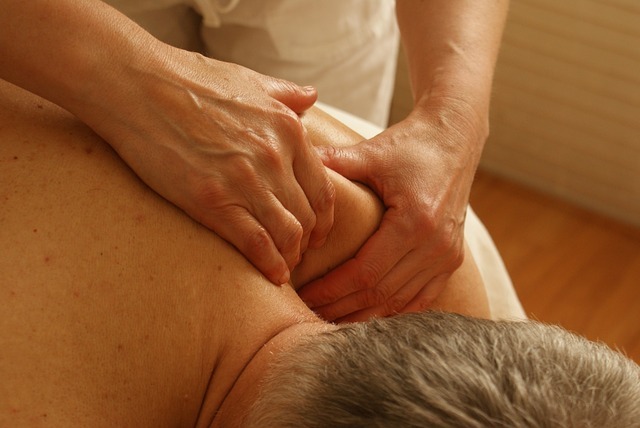Painkillers and pain relievers for cyclists vary in the degree of relief they provide. These tips will help you better understand how to achieve the best pain relief for your cycling injury. Pain in the soft tissues that occurs as a result of overuse injuries is common among cyclists. But whether your pain is acute or chronic, these pain relievers should help.
- Anti-inflammatory medications – NSAIDs or anti-inflammatory medications offer significant relief from muscular pain. These medications block the enzymes that produce a painful response in the body, which relieves mild aches and pains. These medications also reduce inflammation, thereby relieving pain. Some examples of anti-inflammatory medications include Aleve, Advil, Motrin IB, aspirin, ibuprofen, and naproxen. Even though these medications do not require a prescription, they do come with side effects such as stomach irritation and kidney problems. Be sure to carefully read through the associated risks to determine if NSAIDs are good for you.
- Analgesics – Analgesics are pain medications that block signals that produce pain in your body. These products do not, however, reduce inflammation. One common analgesic is acetaminophen or Tylenol. Like NSAIDs, acetaminophen carries some degree of risk. Taken in high doses or over an extended period of time, acetaminophen can cause liver damage or liver failure. Despite these risks, it is an effective pain reliever and, in controlled doses, can provide rapid and steady relief from pain caused by muscular injuries. If the pain is intense, some doctors may prescribe the painkiller tramadol, an opioid painkiller. It is less addictive than other opioids and is quite effective for acute pain. It is not, however, for long term use.
- Topical analgesics – Topical pain relievers come in the form of gels, ointments, creams, and patches. Some of these medications are prescription while others are over the counter. Examples of topical analgesics are Aspercreme, Bengay, Voltaren, Icy Hot, Capzasin, and Solareze. These medications work in slightly different ways depending on their formulations, but generally combine a pain-relieving medication with another remedy, like mint or cayenne peppers. Applied topically, these medications can provide short-term pain relief. These pain relievers work well for neck pain and knee pain, which often plague cyclists.
- Ice – Ice is most effective when used as soon as the pain begins. It can reduce swelling and provide relief from muscle spasms. Reusable ice packs are great, but in a pinch you can use a bag of frozen vegetables from the freezer. It’s also a great idea to carry an instant chemical ice pack in with your gear. Wrap the ice in a cloth or towel to prevent applying it directly to the skin.
- Heat – Heat therapy works to relieve pain by increasing the blood flow and improving the circulation to an area. Heat soothes discomfort and can aid in healing damaged muscle tissue. Dry heat, like heating pads, offers comfort and pain relief and allows you to apply it to the specific area of pain. Moist heat, like hot baths or moist heating packs, have been shown to be more effective, however. Heat should not be applied to an open wound like a cut or a scrape. It should also not be used on swollen or bruised areas. People with diabetes, vascular diseases, deep vein thrombosis, MS, or dermatitis, should avoid using heat therapy.
- Massage – Therapeutic massage provides pain relief in several ways. It relaxes the muscles and tendons and relieves anxiety. It can also stimulate surrounding nerve fibers and block pain messages going to the brain. Although a lot of research is currently ongoing about the benefits of massage, some studies have pointed to a decrease in swelling and an increase in mitochondrial repair of damaged tissues. Massage is especially helpful for chronic pain. Sports massage practices often offer a specific massage aimed to ease pain and irritation caused by cycling.
- Alternative treatments for cycling pain – Cyclists should never discount the use of alternative treatments for pain. Ginger and turmeric, for example, have anti-inflammatory properties. Birch leaf has properties similar to aspirin and also reduces muscle spasms. Capsaicin, found in hot chili peppers, desensitizes pain receptors and can reduce soreness.
Cyclists should never feel that they have to “tough it out” and suffer with pain, especially when there are so many alternatives available for pain relief. It’s important to remember that all these treatments come with some degree of risk, so you should speak with your doctor or pharmacist to determine which treatment is best for your situation.
For a free legal consultation,
call 1-844-242-9253
At Kass & Moses, we know just how much pain can interfere with your ability to lead a productive and happy life. We work with clients who have been injured in bicycle crashes. These individuals face weeks, months, or even a lifetime of pain and suffering. Our aim is to help our clients get the compensation that they deserve for their injuries. We work diligently to get them every penny they deserve. We can help you, too! If you are a loved one have been injured in a bicycle crash, contact Kass & Moses today.
Call or text 1-844-242-9253 or complete a Free Case Evaluation form


